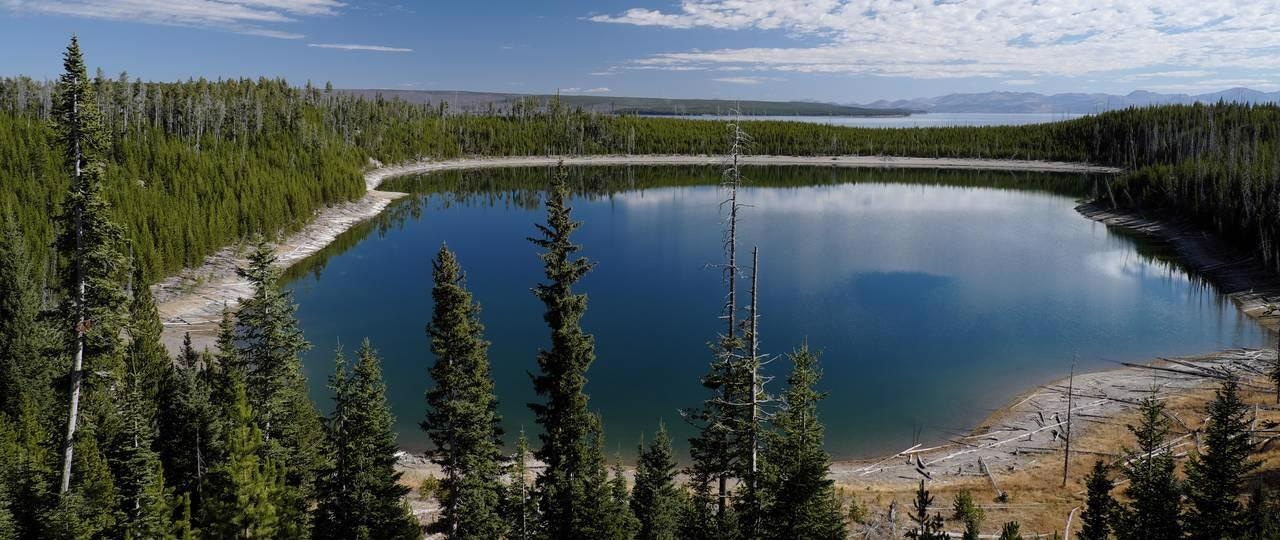The risk of forest fires is growing with the increase in temperatures. Scientists at the Technical University of Munich (TUM) are employing artificial intelligence to evaluate the long-term effect on forest ecosystems due to the increased number of forest fires.
 The iconic landscape of Yellowstone National Park is characterized by vast forests that have been untouched by man but are threatened by increasing numbers of forest fires due to climate change. Image Credit: R. Seidl / Technical University of Munich.
The iconic landscape of Yellowstone National Park is characterized by vast forests that have been untouched by man but are threatened by increasing numbers of forest fires due to climate change. Image Credit: R. Seidl / Technical University of Munich.
The simulations depict how Yellowstone National Park in the United States could change by the end of the 21st century. Forest fires are already considered a global threat.
But considering how climate change is progressing, we are probably only at the beginning of a future that will see more and bigger forest fires.
Rupert Seidl, Professor, Ecosystem Dynamics and Forest Management in Mountain Landscapes, Technical University of Munich
Fires are part of the natural environment in several places, and many tree species have naturally adapted to repeated forest fires. Such adaptive characteristics range from specifically thick bark, which safeguards the sensitive cambium in the trunk from the forest fire, to the cones of a few kinds of pine that open only because of the high temperature caused by fire, which enables a rapid regeneration and recovery of affected woodland.
AI is Accelerating Ecosystem Models
The interaction between climate, forest fires, and other processes in the forest ecosystem is very complex, and sophisticated process-based simulation models are required to take account of the different interactions appropriately.
Rupert Seidl, Professor, Ecosystem Dynamics and Forest Management in Mountain Landscapes, Technical University of Munich
A new technique developed at the TUM makes use of artificial intelligence (AI) to considerably extend the field of the use of such complicated models.
In this method, a deep neural network is trained to mimic the behavior of a complicated simulation to its maximum effectiveness. The neural network learns based on various ecosystem responses to different environmental impacts. However, this needs only a fraction of the computing power that would be essential for large-scale simulation models.
This allows us to carry out spatially high-resolution simulations of areas of forest that stretch across several million hectares.
Dr Werner Rammer, Scientist, Ecosystem Dynamics and Forest Management Group, Technical University of Munich
Forecast for the Forests in Yellowstone National Park
The simulations by the researchers include simulations for the “Greater Yellowstone Ecosystem”, which encompasses the most popular Yellowstone National Park at its center. The ecosystem covers an area of around 8 million hectares and is located in the Rocky Mountains. A large part of this area is untouched.
Scientists at the TUM collaborated with American collaborators to identify how various climate conditions could impact the frequency of forest fires in the region in the 21st century, as well as which areas of the forest lack the ability to regenerate successfully after a forest fire.
Based on the climate change scenario, the research revealed that by the end of the 21st century, the present forest coverage would probably disappear in 28% to 59% of the region.
The region mainly subjected to the impact would have been the forests in the sub-alpine zone near the tree line, where the tree species are naturally less adaptive to fire, and the areas covering the Yellowstone Plateau, where the comparatively flat topography is unable to inhibit the spread of fire.
Climate Change is Causing Significant Changes to Forest Ecosystems
There are various reasons for the regeneration of the forest in the region under investigation is under threat. If the fire grows bigger and the distances between the surviving trees also increase, very few seeds can make it to the ground.
When the climate gets hotter and drier in the future, the susceptible young trees will not survive. Moreover, if the number of fire incidents is greater, then the trees will not reach the seed-yielding age.
“By 2100, the Greater Yellowstone Ecosystem is expected to have changed more than it has in the last 10,000 years, and will therefore look significantly different than it does today. The loss of today’s forest vegetation is leading to a reduction in the carbon which is stored in the ecosystem, and will also have a profound impact on the biodiversity and recreational value of this iconic landscape,” concluded Rammer.
The possible development trends determined in the study could help the national park visitors to perceive the impacts of climate change and the emergent need for climate protection efforts. Going forward, the researchers will employ artificial intelligence to evaluate the long-term effects of the issues that arise due to climate change in European forests.
Journal Reference:
Rammer, W., et al. (2021) Widespread regeneration failure in forests of Greater Yellowstone under scenarios of future climate and fire. Global Change Biology. doi.org/10.1111/gcb.15726.